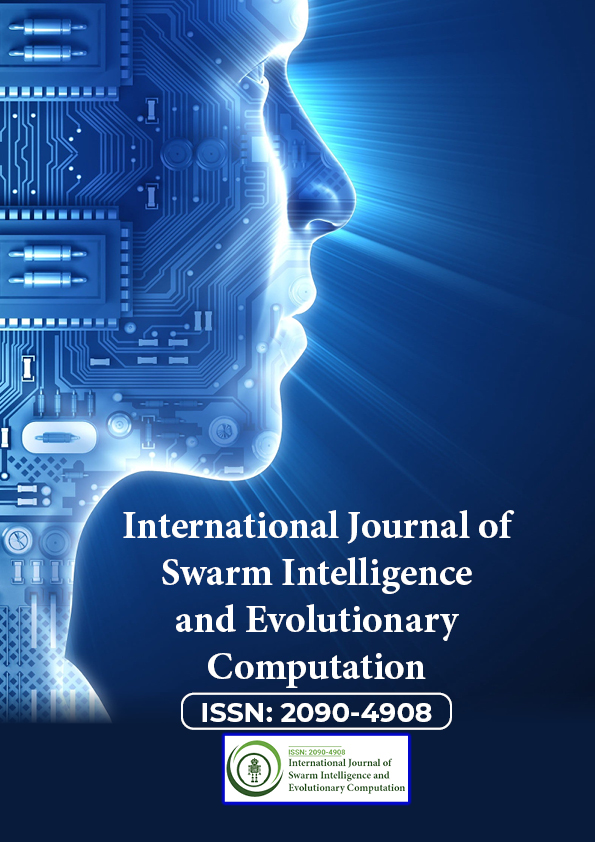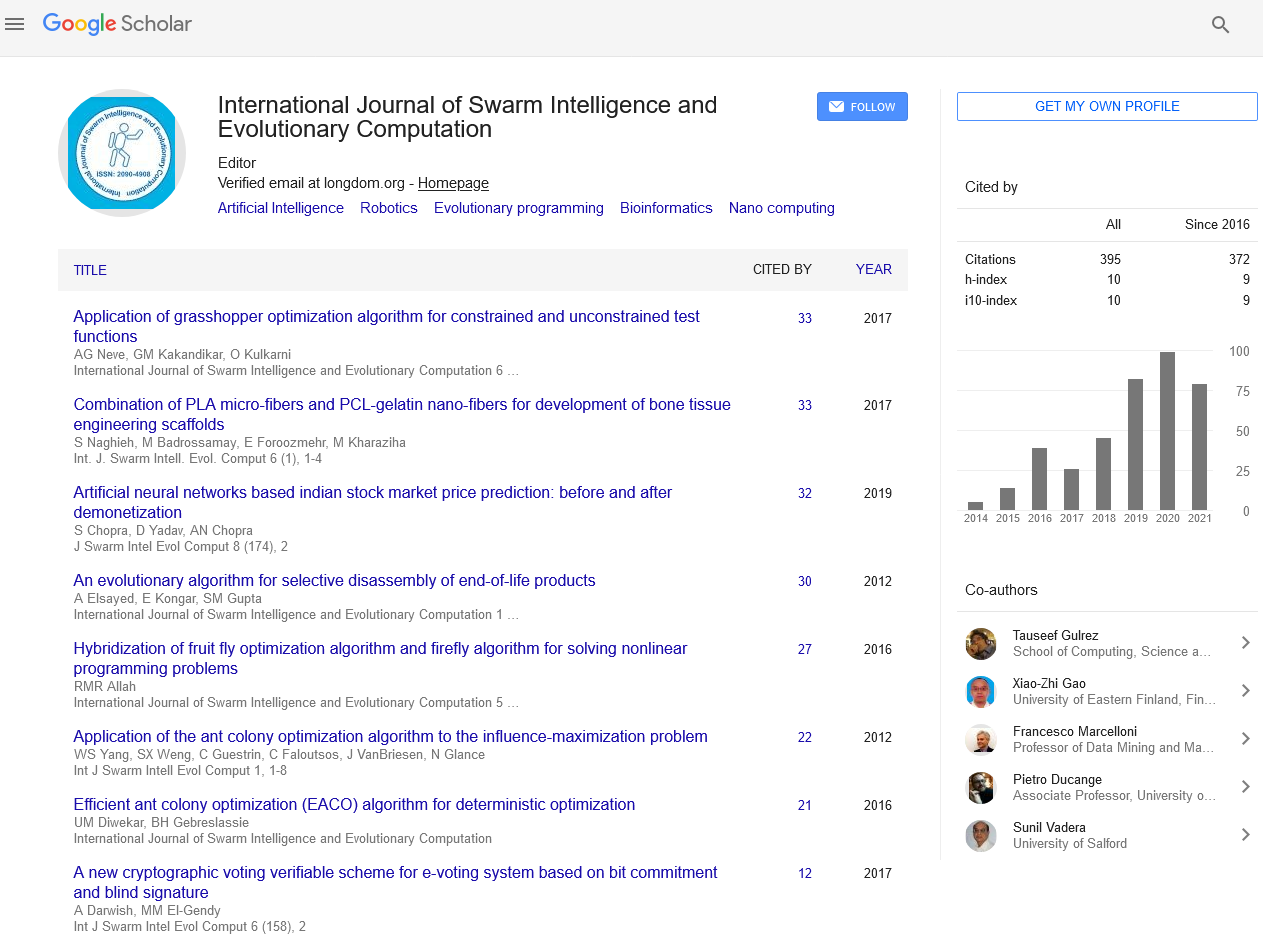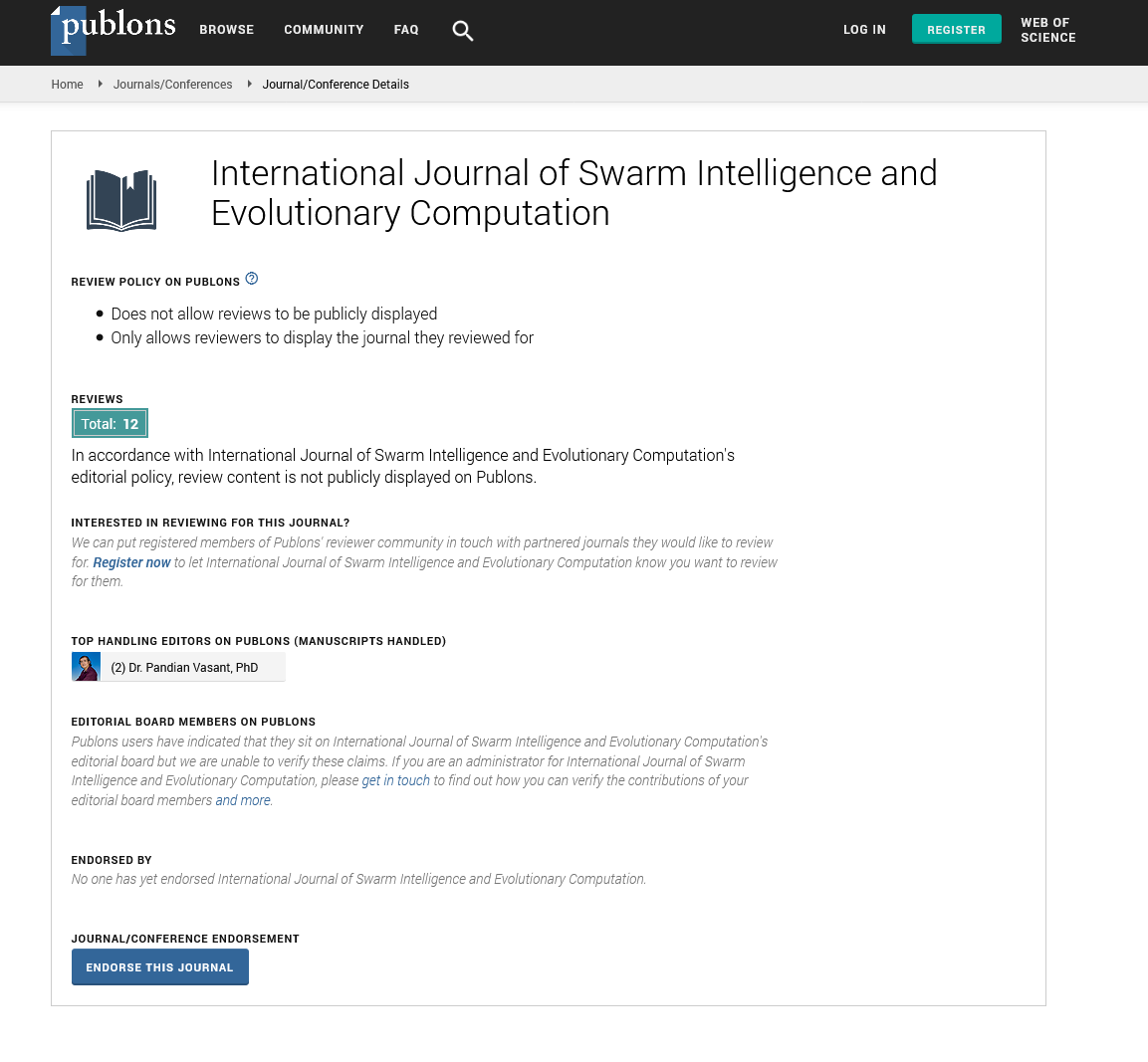Indexed In
- Genamics JournalSeek
- RefSeek
- Hamdard University
- EBSCO A-Z
- OCLC- WorldCat
- Publons
- Euro Pub
- Google Scholar
Useful Links
Share This Page
Journal Flyer

Open Access Journals
- Agri and Aquaculture
- Biochemistry
- Bioinformatics & Systems Biology
- Business & Management
- Chemistry
- Clinical Sciences
- Engineering
- Food & Nutrition
- General Science
- Genetics & Molecular Biology
- Immunology & Microbiology
- Medical Sciences
- Neuroscience & Psychology
- Nursing & Health Care
- Pharmaceutical Sciences
Commentary - (2024) Volume 13, Issue 4
Transformative Applications of Wireless Sensor Networks in Modern Technology
Ning Wilson*Received: 28-Jun-2024, Manuscript No. SIEC-24-26596; Editor assigned: 01-Jul-2024, Pre QC No. SIEC-24-26596 (PQ); Reviewed: 16-Jul-2024, QC No. SIEC-24-26596; Revised: 24-Jul-2024, Manuscript No. SIEC-24-26596 (R); Published: 31-Jul-2024, DOI: 10.35248/2090-4908.24.13.382
Description
Wireless Sensor Networks (WSNs) represent a significant advancement in communication technology, providing a strong platform for monitoring and collecting data from various environments. Comprised of spatially distributed autonomous sensors, WSNs are capable of measuring physical or environmental conditions such as temperature, sound, pollution levels, humidity, and more. The data collected is transmitted through the network to a central location for processing and analysis. This technology has found applications in numerous fields, transforming the way we interact with our environment and enhancing efficiency, safety, and decision-making processes.
Environmental monitoring
One of the most prominent applications of WSNs is environmental monitoring. These networks are deployed to observe and analyze environmental parameters such as temperature, humidity, air quality, and soil moisture. For instance, in forest areas, WSNs can detect early signs of wildfires by monitoring temperature and smoke levels, enabling timely intervention and potentially saving vast natural resources and lives. Additionally, WSNs are utilized in water quality monitoring in rivers, lakes, and oceans, ensuring the safety and sustainability of aquatic ecosystems. By providing continuous, real-time data, WSNs facilitate proactive environmental management and conservation efforts.
Healthcare
In the healthcare sector, WSNs have revolutionized patient monitoring and care. Wearable sensors are used to continuously track vital signs such as heart rate, blood pressure, and glucose levels in patients. This real-time data is transmitted to healthcare providers, allowing for immediate intervention in case of anomalies. For example, in elderly care, WSNs can detect falls or irregular movements, alerting caregivers to provide prompt assistance. Moreover, WSNs are used in hospital settings to monitor the condition of critical equipment and ensure the safety and well-being of patients. The integration of WSNs in healthcare not only enhances patient outcomes but also optimizes the use of medical resources.
Agriculture
Agricultural practices have significantly benefited from the implementation of WSNs. Precision agriculture, which involves the use of technology to optimize crop production, relies heavily on WSNs to monitor soil conditions, crop health, and environmental factors. Sensors placed in fields collect data on soil moisture, temperature, and nutrient levels, enabling farmers to make informed decisions about irrigation, fertilization, and pest control. This data-driven approach leads to increased crop yields, reduced resource consumption, and minimized environmental impact. Furthermore, WSNs assist in livestock monitoring by tracking the health and movement of animals, ensuring their well-being and productivity.
Industrial automation
WSNs plays an important role in industrial automation, enhancing the efficiency and safety of manufacturing processes. In factories, sensors are deployed to monitor machinery conditions, detect faults, and predict maintenance needs. This predictive maintenance approach reduces downtime and extends the lifespan of equipment, resulting in cost savings and improved productivity. Additionally, WSNs are used in supply chain management to track the location and condition of goods during transportation. By providing real-time data on factors such as temperature and humidity, WSNs help maintain the quality of perishable products and ensure timely deliveries. The integration of WSNs in industrial settings encourage operational excellence and competitiveness.
Smart cities
The concept of smart cities relies on the extensive use of WSNs to enhance urban living conditions and resource management. In smart cities, WSNs are deployed to monitor and control various infrastructure elements such as traffic lights, street lighting, and waste management systems. For instance, traffic sensors collect data on vehicle flow and congestion, enabling dynamic traffic management and reducing travel time for commuters. Similarly, smart lighting systems use WSNs to adjust streetlight brightness based on the presence of pedestrians or vehicles, optimizing energy consumption. Furthermore, WSNs are used in waste management to monitor the fill levels of trash bins, enabling efficient collection routes and reducing operational costs. The deployment of WSNs in smart cities promotes sustainability, efficiency, and a higher quality of life for residents.
Challenges and future directions
Despite the numerous advantages of WSNs, their implementation faces several challenges. These include issues related to power consumption, data security, and network scalability. Sensor nodes are often battery-powered, and optimizing energy usage is important for prolonging their operational lifespan. Additionally, the transmission of sensitive data over wireless networks necessitates strong security measures to prevent unauthorized access and data breaches. Network scalability is another concern, as the integration of a large number of sensor nodes requires efficient communication protocols to ensure seamless data transmission.
Future research and development in WSNs are focused on addressing these challenges and expanding their application areas. Advancements in energy harvesting techniques, such as solar and kinetic energy, are being explored to enhance the longevity of sensor nodes. Improved security protocols and encryption methods are being developed to safeguard data integrity and privacy. Moreover, the integration of WSNs with emerging technologies such as the Internet of Things (IoT), Artificial Intelligence (AI), and Machine Learning (ML) holds potential for creating more intelligent and adaptive sensor networks. These advancements will further expand the scope of WSNs, making them indispensable in various domains.
Conclusion
Wireless Sensor Networks have demonstrated their immense potential across a wide range of applications. From environmental monitoring and healthcare to agriculture, industrial automation, and smart cities, WSNs have transformed how we collect, analyze, and utilize data. As technology continues to evolve, WSNs will play an increasingly vital role in creating a more connected, efficient, and sustainable world. By addressing current challenges and future innovations, WSNs will continue to drive progress and improve the quality of life in myriad ways.
Citation: Wilson N (2024) Transformative Applications of Wireless Sensor Networks in Modern Technology. Int J Swarm Evol Comput. 13:382.
Copyright: © 2024 Wilson N. This is an open-access article distributed under the terms of the Creative Commons Attribution License, which permits unrestricted use, distribution, and reproduction in any medium, provided the original author and source are credited.


